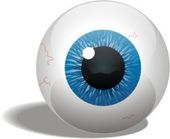OF THE
TIMES
History will have to record that the greatest tragedy of this period of social transition was not the strident clamor of the bad people, but the appalling silence of the good people.
The Canadian gov't is a puppy dog yapping away at a giant panda. And since Trudoh, it's a bit of a laughing stock too. Canada needs China more...
Salmonella is rife here in the tropics. As is a mythical entity known as Karikari: an invisible entity that lives off the body fat of its victims...
Seinfeld sucked. And Jerry Seinfeld has never been funny.
The important thing to understand is that the UFOs are REAL. Whether they're crewed by little gray humanoids or tall white humanoids or "living"...
This article provides a good explanation why the tech magnate Bill Gates jumped into the pharmaceutical industry prior to the world releasing AI:...
To submit an article for publication, see our Submission Guidelines
Reader comments do not necessarily reflect the views of the volunteers, editors, and directors of SOTT.net or the Quantum Future Group.
Some icons on this site were created by: Afterglow, Aha-Soft, AntialiasFactory, artdesigner.lv, Artura, DailyOverview, Everaldo, GraphicsFuel, IconFactory, Iconka, IconShock, Icons-Land, i-love-icons, KDE-look.org, Klukeart, mugenb16, Map Icons Collection, PetshopBoxStudio, VisualPharm, wbeiruti, WebIconset
Powered by PikaJS 🐁 and In·Site
Original content © 2002-2024 by Sott.net/Signs of the Times. See: FAIR USE NOTICE

Reader Comments
to our Newsletter